
- Wood From Original
- Decade
- Features
- Antique (6)
- Autographed (7)
- Boxed (14)
- Carvings (83)
- Durable (7)
- Easy Installation (59)
- Fixed (8)
- Framed (60)
- Framed, Signed (12)
- Hand Painted (10)
- Handmade (13)
- Illustrated (8)
- Lanyard Hole (22)
- Limited Edition (8)
- Mahagany Shade (13)
- One Of A Kind (ooak) (57)
- Reclaimed (18)
- Salvage (34)
- Sheath Included (54)
- Signed (85)
- ... (3551)
- Listed By
- Material
- Style
- Abstract (32)
- Americana (80)
- Antique (48)
- Art Deco (40)
- Asian (20)
- Black Forest (33)
- Country (23)
- Folk Art (61)
- French (31)
- Impressionism (24)
- Mid-century Modern (54)
- Modern (19)
- Naive, Primitive (63)
- Realism (47)
- Rustic / Primitive (15)
- Traditional (21)
- Tramp (18)
- Victorian (35)
- Vintage (20)
- Wood Block Prints (40)
- ... (3405)
- Type
A Japanese Lacquered and Gilt Wood Statue from Edo Period
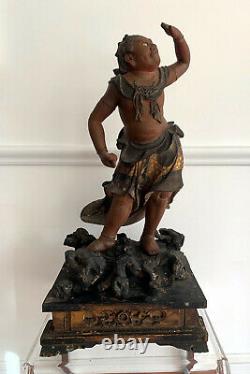
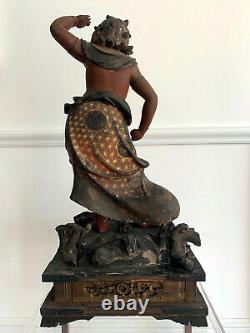
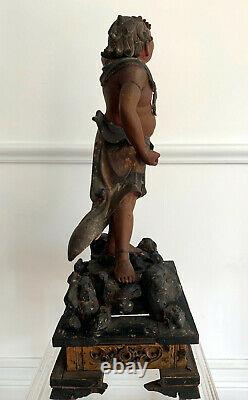
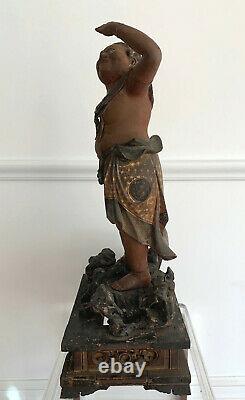
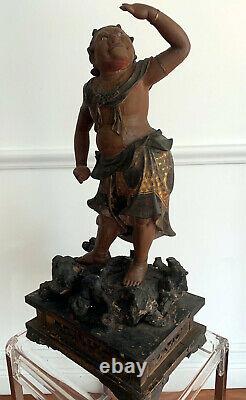
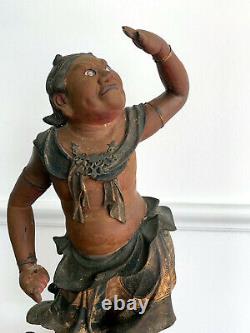
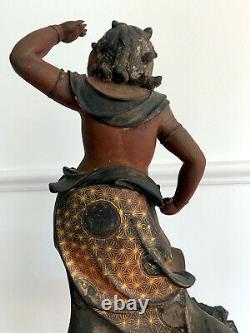
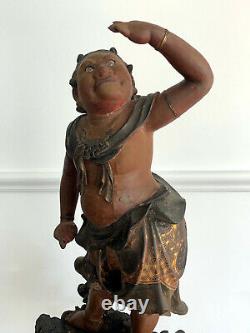
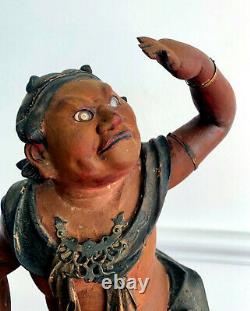
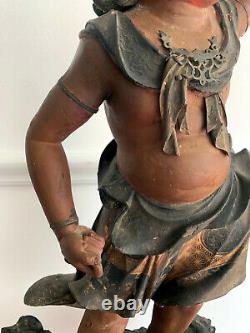
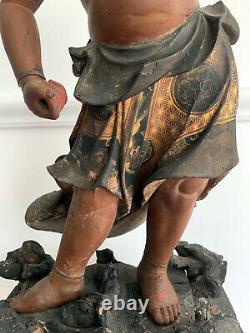
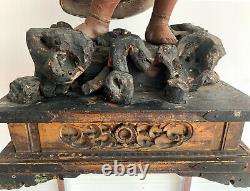


A Japanese Lacquered and Gilt Wood Statue from Edo Period. One of two chief attendants of Fudou Myouou, the other being Kongara doji, the name of Seitaka Doji is a transliteration of Sanskrit "Cetaka", meaning servant, slave, and he is said to personify expedient action.
He is most commonly found on the right side of Fudou, together with Kongara Doji on the left, forming the Immovable triad, Fudou Sanzon, the terror of evil doers. Seitaka largely adheres to the iconography of a wrathful youth with fleshy body and face, skin in the color of a red lotus, has his hair tied in five knots, and holds a vajra in his left hand and a vajra-club in his right hand, but the actual artistic representations of him in Japan do not always strictly follow these prescriptions. The statue on offer here displays a red skinned boy with glaring glass eyes, striking a formidable pose on a rock outcrop. The artistic depiction of his youthful fleshy body and face is superb, noting the realistic rendition of his belly and cheek. He is bejeweled with articulated necklaces and bracelets, a treatment of Japanese Buddhism figure since Nara Period.He wear five knots of hairdo on his head and a bellowing robe (kesa) with splendid designs in Maki-e lacquer. The tributes in his hands are now missing. The stand he is on features rocks made from blocks of wood, detail carvings and metal ornaments. This is a wonderful wood statue that remains largely intact.
TISHU offers collectible Design, Art and Antiques for exquisite living. Let timeless beauty be the only rule. We warrantee and represent that the goods are as described in the above listing. We specifically disclaim any implied warranties of title, merchantability, fitness for a particular purpose and non-infringement.
Customers should satisfy themselves that any item choice made is suitable for their intended purpose or use. We pride ourselves on our customer service. You may also be interested in..
This item is in the category "Antiques\Asian Antiques\Japan\Statues". The seller is "gallery-t" and is located in this country: US. This item can be shipped worldwide.- Age: Pre-1800
- Region of Origin: Japan
- Primary Material: Wood
- Original/Reproduction: Antique Original

